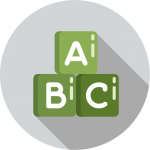Why is massage therapy important?
Massage therapy is a great way to remove tension from a stressful work day, help reduce chronic pain, lower injury and recovery time, or just a way to treat yourself. Massages can reduce muscle tension, improve circulation, reduce stress hormones, heighten mental alertness, and so much more.
What can massage therapy help?
Massage therapy has been proven to be an effective tool to alleviate pain and other symptoms for many people suffering from acute and chronic health conditions. Massage can play a vital role in health and wellness programs either alone or as part of a collective treatment plan with other healthcare providers. (As always, check with your doctor if you have any of these conditions before beginning massage therapy.)
Conditions massage therapy has been shown to help include:
- Back pain
- Headaches
- Migraines
- Arthritis and rheumatoid arthritis
- Fibromyalgia
- Fatigue
- Carpal tunnel
- Sciatica
- Anxiety
- Lupus
- Depression
- Osteoarthritis
- Sports injuries
- Neck pain
- Insomnia
- Surgery recovery
- Frozen shoulder
- Muscle sprains and strains
- Tennis elbow
- Stress
- Repetitive stress injuries
- Myofascial pain syndrome
- Rotator cuff syndrome
- Tendonitis
- Digestive issues
- Tension headaches
- Achilles tendonitis
- Temporomandibular Joint Dysfunction (TMD)
- And more!
What massage techniques do you use?
Click the icons below to explore which techniques may be used during your massage therapy session.
Swedish massage is the most commonly integrated massage type. The goal of Swedish massage therapy is to help relax the entire body. This body-work technique helps to improve the blood flow in the body through long gliding strokes and gently rubbing the muscles. Swedish massage can decrease toxins, relieve stress, decrease tension, improve circulation, and boost flexibility.
Therapeutic massage focuses on helping alleviate pain for a specific issue. The amount of pressure will vary based on the needs of your body. Therapeutic massage techniques include Neuromuscular, orthopedic, myofascial release, trigger point, and sports massage.
Hot Stone Massage utilizes a combination of hot stone protocols with a full body massage to ease muscle stiffness. The warm stones help expand blood vessels, increase blood flow, boost circulation, and provide a relaxing—almost sedative effect—to relieve pain.
Prenatal massage is a safe and effective technique for relieving many expectant mothers’ pregnancy symptoms including headaches, fatigue, backache, leg cramps, muscle cramps, and swelling (edema).
Sports massage is intended for the active athlete—from weekend warriors to professional athletes. Massage therapy can be used to increase flexibility, reduce injury, improve performance, and lower recovery time.
Youth massage is for children to the age of sixteen. Regular massage has been linked to boosting immunity, reducing stress, improving sleep, increasing focus, and aiding the body in healthy development.
Orthopedic massage is a specialized type that requires additional training. The technique primarily focuses on releasing tight muscles but also helps to stretch shortened muscles and tendons and decompress joints. The goal of orthopedic massage is to normalize the soft tissues of the body—both to treat specific conditions and to keep clients generally healthy and fit.









